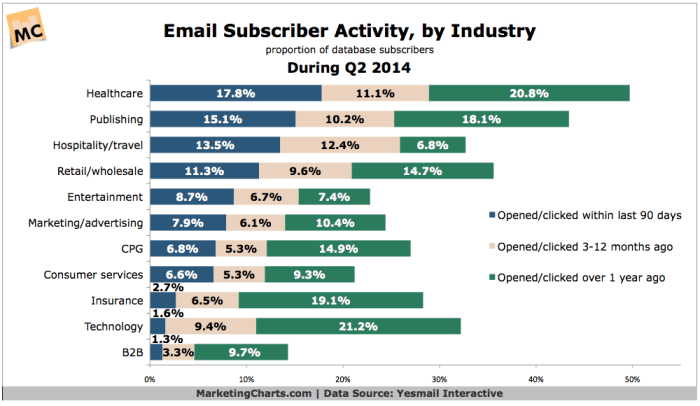Email marketing personalisation is focusing on the wrong kind of being personal
[dropcap]W[/dropcap]e have all had emails addressed to “Dear Firstname”, where the hapless marketer has inserted a “personalisation” code but has actually forgotten to gather any personal data about us that could be inserted into such codes. Sure, we find it annoying and we move on. Many such emails are probably deleted within seconds. Indeed, in a recent analysis of email marketing it was found that only 1.3% of email marketing to the “Business-to-Business” sector actually garners any real engagement. In other words, most B2B email marketers are whistling in the wind.
The study found, however, that in stark contrast there was significant engagement with email marketing from the healthcare sector. Indeed, 17 times as many subscribers to healthcare companies were engaged with the emails they were sent than was the case for B2B. It all suggests that those healthcare emails were much more interesting.
Make it personal
The real issue this study has uncovered is personalisation. Email marketers seem to think that “personalisation” is “Dear Firstname”. But that is not personalisation, that is just good addressing. Personalisation to the recipient of an email is “this is about ME”. That’s where the healthcare industry scores. Their emails are intensely personal; they are about the individual themselves. Many B2B emails, though, are “business-like” and about the company sending the message.
Personalisation means making the email about the individual recipient and their specific needs. That means when you collect email data you need more than “first name, last name”; instead you need to know interests, likes, dislikes and so on. You need to know what makes each potential reader “tick”. Of course, if you try to collect that information in a sign-up box, you reduce the number of people signing up – the more fields people have to complete, the fewer people fill them in.
So, you need to add this data to your email marketing system at a later date. You can do this through polls, surveys and ongoing customer research. Then you can include this information in emails which you send out so that the messages are much more personal.
The crucial thing which this new research shows us is that you gain more engagement when you make it more personal. Focus on them, as individuals not target groups, and your email marketing will gain greater impact.


